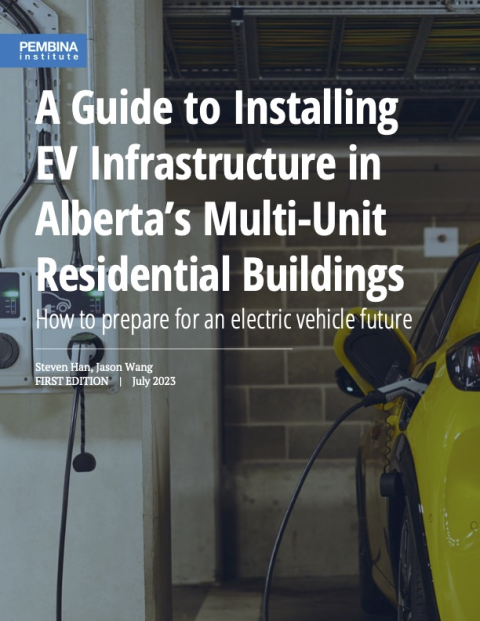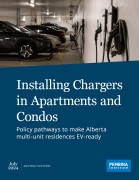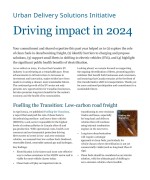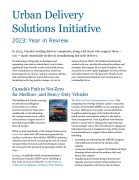Since 2017, sales of electric vehicles (EVs) in the province of Alberta have increased almost ninefold and strong and continued growth is predicted. With EVs likely to reach price parity with conventional vehicles by the mid- to late-2020s — and the federal government set to introduce sales targets to increase domestic EV supply — zero-emission vehicles are poised to dominate Canadian automobile sales over the next decade.
The number and location of EV chargers will need to increase accordingly to keep pace with demand. While residential EV chargers are the most common and convenient option, many Canadians live in multi-unit residential buildings (MURBs), such as condos and apartments, where there are few if any EV chargers either in the building’s parking area or nearby.
This guide presents expedient ways to install chargers for electric vehicles and find efficiencies to help make the process smoother in existing residential buildings and new builds. Not only does charging infrastructure increase the value of the building to residents, it also boosts a building’s market value. Arguably, the addition of charging infrastructure encourages uptake in EV purchases — a choice that Albertans are making in greater number year over year and an appealing option to the skilled workers that the province is trying to attract.
With the rapid transition from gas-fueled to hybrids and all-electric cars, our guide offers resources and advice for property owners/managers and condo boards on how to prepare for an EV future.
Key takeaways
1. Start preparing for the future now. With the federal government set to require that 20% of new passenger vehicle sales by suppliers be zero-emission by 2026, followed by 60% of sales by 2030, and 100% by 2035, an all-electric future is fast approaching. Electrical renovations can take considerable time to plan and implement and, in the case of new builds, charging plans must be in place at the beginning of the project.
2. Make parking spaces “EV-ready.” EV chargers do not need to be the first step in making a building EV-friendly. Installing outlets or junction boxes adjacent to parking spaces allows residents to easily connect to a charger at some point in the future.
3. Use EV energy management systems (EVEMS) to reduce costs. EVEMS are a technology that controls the rate, or speed, of the charge, and the most efficient times to charge. This allows multiple chargers to share the same branch circuit (the wire from the electrical panel breaker to the outlet connecting the charger).
4. Understand the benefits of a comprehensive 100% EV-ready approach. It can be tempting to electrify only a few parking spaces at a time, or to install a handful of chargers for drivers to share in common parking areas. As demand for charging grows, however, and more drivers want access to chargers in their dedicated parking spot, a piecemeal approach can quickly become unsustainable and expensive. If only a handful of parking spaces are electrified with little forward planning, those first few chargers could end up exhausting electrical capacity.
5. Policymakers need to step up. While this guide is focused on the practical steps to installing EV infrastructure, decision-makers at all levels of government need to present policies and programs that support the installation of charging infrastructure in MURBs. The upfront cost is the most daunting obstacle. Overcoming this obstacle will entail:
- requiring that EV-ready parking be a mandatory part of new construction
- introducing rebate programs to cover a portion of costs
- exploring financing mechanisms, rate structures and other options to enable MURB owners and utilities to invest in charging infrastructure.






